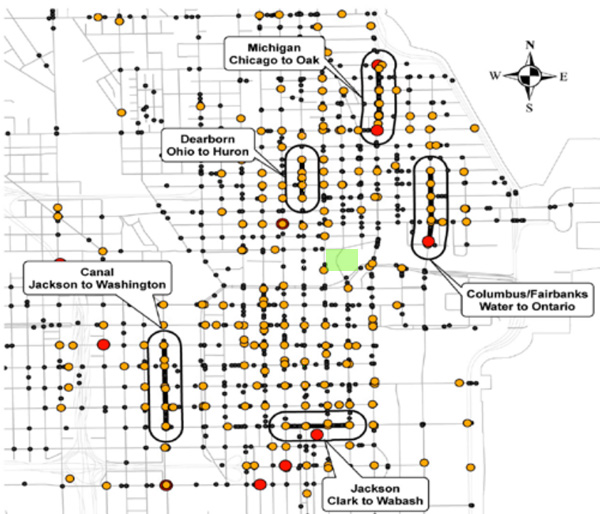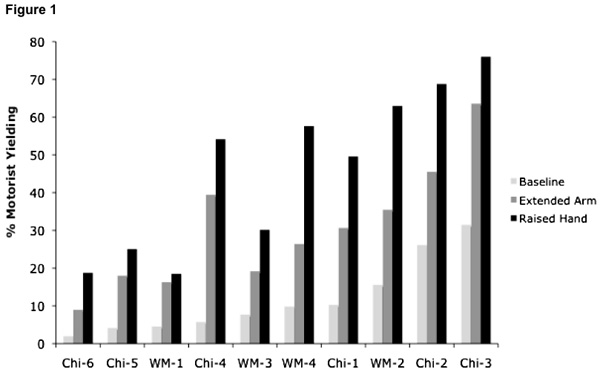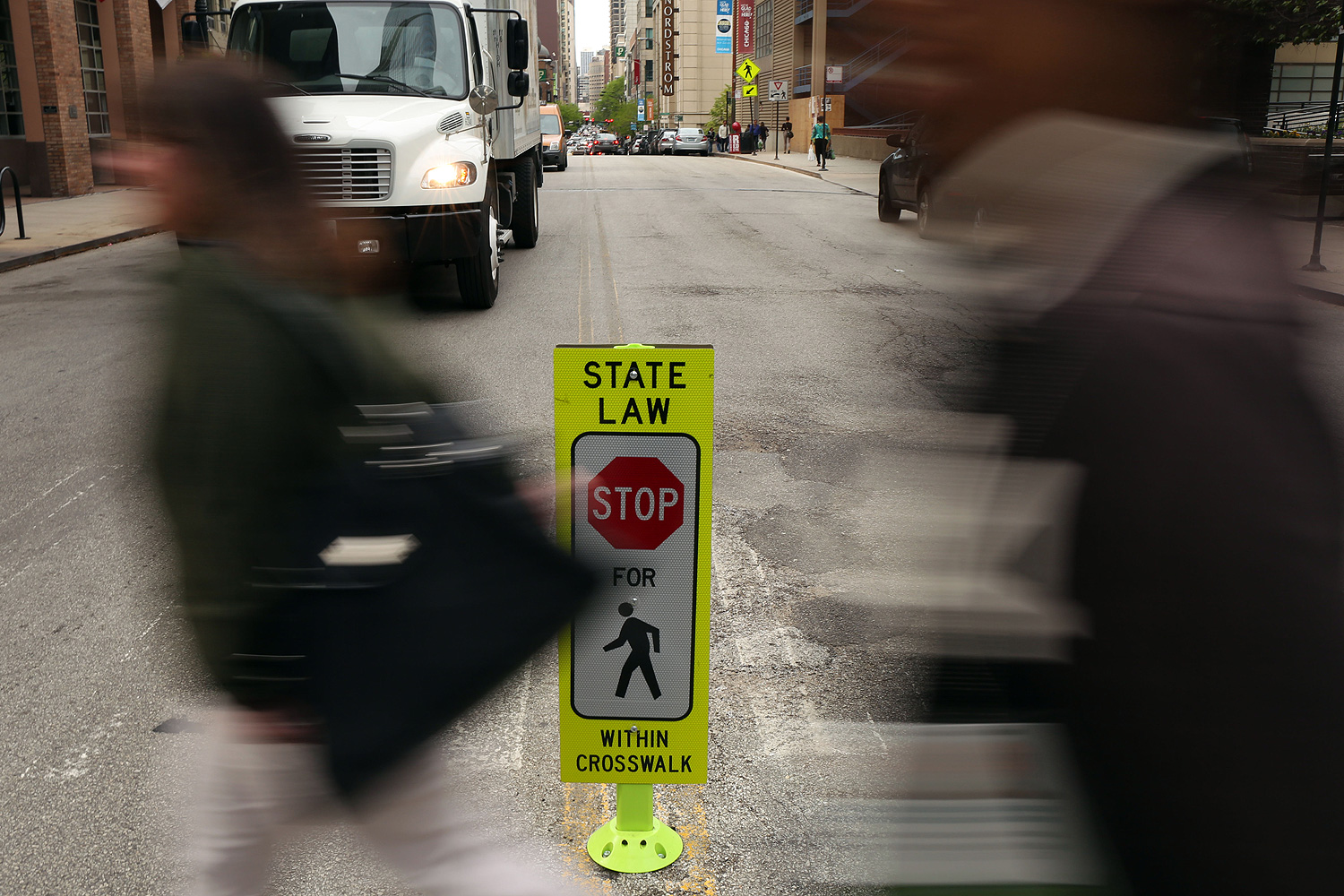In the past few years, in an effort parallel to New York's "Mission Zero" campaign, Chicago has been trying to reduce the number of pedestrian crash injuries and fatalities. You've probably noticed the in-street warnings that cars are supposed to stop for pedestrians in the crosswalk; if so, you've probably noticed how many of the $400 signs have been mowed down.
This week the city stepped up its efforts with another crosswalk sting, in which plainclothes officers tested drivers' willingness to stop; last year the city caught 1,200 scofflaws in its crackdown.
John Kass laments on this phenomenon, at a crosswalk familiar to me:
They're both just north of the river [on Wabash near Trump Tower], and both are inherently evil. One is near the Dunkin' Donuts, with bits of faded paint on the pavement, barely signaling a crosswalk. That one is the Mother of All Evil Crosswalks.
You take your life in your own hands, and roll the dice and hope cabdrivers can read the bright yellow sign in the middle of the street telling them to stop for pedestrians in the crosswalk.
Kass tried to get data on exactly how bad the Mother of All Evil Crosswalks actually is—my pick would be Chicago and Hoyne in West Town, but having crossed Wabash at Trump Tower many times, my luck in the crosswalk has been equally poor. City Hall didn't come through with recent data:
We hounded City Hall for several days, but for reasons I can't explain, bureaucrats couldn't come up with hard statistics on the number of pedestrians struck by vehicles on that stretch of Wabash. Instead, City Hall forwarded police statistics showing 62 traffic crashes on that stretch since 2004. But these weren't specific to pedestrians.
But there is some data out there, if a bit old at this point. First, the city's 2011 Pedestrian Crash Analysis, the most extensive study we have. Here are the crashes from 2005-2009 for that area:

The green square marks the approximate location of the Wabash crosswalks. Perhaps unsurprisingly—Wabash doesn't have the same pedestrian and vehicular traffic—Dearborn and Michigan are the real problem spots in the neighborhood, though it's possible that traffic patterns have changed in the past five years.
But it shouldn't be a surprise. According to the city's data, half of fatal and serious injury crashes occur on arterial streets, which make up only 10 percent of mileage in the city. All of the top 10 crash corridors were arterials. Within the CBD, "66 percent of the crashes in the CBD involved turning vehicles." Wabash isn't an arterial and it's not located near an intersection. People should stop at the crosswalk—it's the law—but the bigger problems are intersections of faster streets.
[Steven Vance, of Streetsblog Chicago, also has data from IDOT for pedestrian and bike crashes from 2005-2012 (it took him eight months to get it). The app he built around it, Chicago Crash Browser, also suggests the Wabash crosswalks aren't particularly problematic, with no recorded crashes south of South Water Street, and four between South Water and Illinois. North of Illinois, it gets worse.]
The city's trying to raise awareness—though it really ought to repaint the crosswalk Kass refers to—but stopping at crosswalks is a habit, and habits are hard to change. What's a pedestrian to do? Raise your hand.

Those are the results of a small-scale field study (20 crossings for each condition) conducted by researchers from Western Michigan in Chicago and in their region, examining how your behavior effects the likelihood that drivers will stop for you at uncontrolled crosswalks.
Chi-3 crossed the street to a hospital, so that may go some way towards explaining why people were more likely to stop. Chi-2 connected to a hospital and had a "yield to pedestrian sign." Chi-1 was near the El, and had a sign, but also went across four lanes. The worst results, came, amusingly enough, from a crosswalk to a police station.
But no matter what, raising a hand improved the testers' odds. It might, on occasion, incur the wrath of drivers, but it appears to improve your odds of making it across the street.



